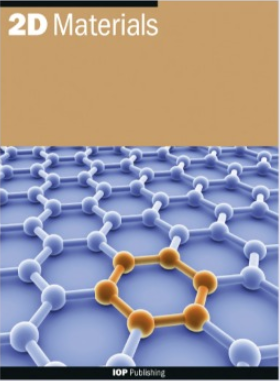Short excitonic lifetimes of MoSe2 monolayers grown by molecular beam epitaxy on the hexagonal boron nitride
IF 4.5
3区 材料科学
Q2 MATERIALS SCIENCE, MULTIDISCIPLINARY
引用次数: 0
Abstract
We present a time-resolved optical study of recently developed narrow-line MoSe2 monolayers grown on hexagonal boron nitride with means of Molecular Beam Epitaxy. We find that the photoluminescence decay times are significantly shorter than in the case of the exfoliated samples, even below one picosecond. Such a short timescale requires measurements with better resolution than achievable with a streak camera. Therefore, we employ an Excitation Correlation Spectroscopy (ECS) pump-probe technique. This approach allows us to identify two distinct non-radiative recombination channels attributed to lattice imperfections. The first channel is active at helium temperatures. It reduces the lifetime of the neutral exciton to below one picosecond. The second channel becomes active at elevated temperatures, further shortening the lifetimes of both neutral and charged exciton. The high effectiveness of both radiative and non-radiative recombination makes epitaxial MoSe2 a promising material for ultrafast optoelectronics.通过分子束外延在六方氮化硼上生长的 MoSe2 单层的短激子寿命
我们利用分子束外延技术对最近在六方氮化硼上生长的窄线型 MoSe2 单层进行了时间分辨光学研究。我们发现,光致发光衰减时间明显短于剥离样品,甚至低于一皮秒。如此短的时间尺度要求测量结果具有比条纹照相机更高的分辨率。因此,我们采用了激发相关光谱(ECS)泵探技术。通过这种方法,我们可以确定两种不同的非辐射重组通道,它们都归因于晶格缺陷。第一种通道在氦温度下非常活跃。它将中性激子的寿命降低到一皮秒以下。第二个通道在温度升高时变得活跃,进一步缩短了中性激子和带电激子的寿命。辐射和非辐射重组的高效性使外延 MoSe2 成为一种很有前途的超快光电材料。
本文章由计算机程序翻译,如有差异,请以英文原文为准。
求助全文
约1分钟内获得全文
求助全文
来源期刊

2D Materials
MATERIALS SCIENCE, MULTIDISCIPLINARY-
CiteScore
10.70
自引率
5.50%
发文量
138
审稿时长
1.5 months
期刊介绍:
2D Materials is a multidisciplinary, electronic-only journal devoted to publishing fundamental and applied research of the highest quality and impact covering all aspects of graphene and related two-dimensional materials.
 求助内容:
求助内容: 应助结果提醒方式:
应助结果提醒方式:


